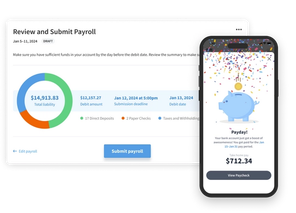
Eddy’s HR Mavericks Encyclopedia
The world's largest free encyclopedia of HR, with 700+ HR articles and podcasts.
Created by Eddy and our HR Mavericks community.
HR-to-Employee Ratio
How big should your HR team be? To determine that, you need to calculate the HR-to-employee ratio. Read on to learn what this ratio means, why it is important, and what factors to consider when calculating the ratio.
What Is an HR-to-Employee Ratio?
The HR-to-employee ratio is an expression of the number of HR employees needed to support 100 full-time employees. It is used to provide a roadmap on when to scale the HR team along with the company workforce. A good rule of thumb to start is 2.5 HR employees per 100 full-time employees. The following sections will discuss factors and circumstances that help you determine if you need a bigger ratio.
Why is the HR-to-Employee Ratio Important?
The HR-to-employee ratio is important because it provides data in making organizational decisions regarding HR support.
- Employee headcount. If an organization is overstaffed and must lay off staff, the ratio can provide guidance if a layoff of HR employees is appropriate as well.
- Benchmarking. Comparing your company ratio to that of other companies may help you determine if additional HR support is needed.
- Delegation. Once you use the ratio to determine an appropriate HR team size, you may decide to delegate or outsource certain functions.
Factors to Consider About HR-to-Employee Ratio
Consider the following factors to determine the ideal HR-to-employee ratio. Although not a complete list, this will help you determine the ratio best for your organization.
Organization Size
- Small companies (0 to 250 employees) require a higher ratio because it takes a minimum number of HR employees to perform core services like benefits administration and recruiting.
- Medium companies (251 to 1000) require a lower ratio because once a certain number of employees are hired, the HR support needed for each one increases at a smaller rate.
- Large companies (1000+) require a lower ratio than medium companies. These HR employees can handle the needs of an increasing number of employees.
Budget
If your evaluation points towards having a larger HR team but there is no money to hire more people, obviously your options are limited. However, your study does provide data to share with leadership to document current needs and plan for the future.
Technology
Organizations that rely heavily on technology need smaller HR teams and a smaller HR-to-employee ratio because more automated tasks reduce the number of people required.
Industry
Different industries have unique challenges that influence the HR-to-employee ratio. Here are a few examples of conditions that impact the appropriate size of an HR team:
- In the construction industry, HR employees may be dealing with union negotiations, workers' compensation claims, and adherence to laws and procedures.
- The tech industry involves creating a unique memorable employee experience to attract new talent (often a start-up mentality with a small group of employees).
- The retail industry focuses on expertise in policy and laws regarding harassment, bullying, and discrimination, and deals with high turnover.
What Is the Average HR-to-Employee Ratio for Organization Size?
A 2021 study by Indeed concluded that an average HR staff to employee ratio is around 2.57 for all organizations. Small organizations have higher ratios with an average of 3.40. Medium organizations often have ratios around 1.22 while a normal ratio for large organizations is 1.03.
Topics

Ryan Archibald
Ryan is an HR Director with four years of experience and three masters degrees. One accomplishment he is proud of is the design and launch of a learning and development program for 800+ employees.
Frequently asked questions
Other Related Terms
Eddy’s HR Mavericks Encyclopedia
HR-to-Employee Ratio
How big should your HR team be? To determine that, you need to calculate the HR-to-employee ratio. Read on to learn what this ratio means, why it is important, and what factors to consider when calculating the ratio.
What Is an HR-to-Employee Ratio?
The HR-to-employee ratio is an expression of the number of HR employees needed to support 100 full-time employees. It is used to provide a roadmap on when to scale the HR team along with the company workforce. A good rule of thumb to start is 2.5 HR employees per 100 full-time employees. The following sections will discuss factors and circumstances that help you determine if you need a bigger ratio.
Why is the HR-to-Employee Ratio Important?
The HR-to-employee ratio is important because it provides data in making organizational decisions regarding HR support.
- Employee headcount. If an organization is overstaffed and must lay off staff, the ratio can provide guidance if a layoff of HR employees is appropriate as well.
- Benchmarking. Comparing your company ratio to that of other companies may help you determine if additional HR support is needed.
- Delegation. Once you use the ratio to determine an appropriate HR team size, you may decide to delegate or outsource certain functions.
Factors to Consider About HR-to-Employee Ratio
Consider the following factors to determine the ideal HR-to-employee ratio. Although not a complete list, this will help you determine the ratio best for your organization.
Organization Size
- Small companies (0 to 250 employees) require a higher ratio because it takes a minimum number of HR employees to perform core services like benefits administration and recruiting.
- Medium companies (251 to 1000) require a lower ratio because once a certain number of employees are hired, the HR support needed for each one increases at a smaller rate.
- Large companies (1000+) require a lower ratio than medium companies. These HR employees can handle the needs of an increasing number of employees.
Budget
If your evaluation points towards having a larger HR team but there is no money to hire more people, obviously your options are limited. However, your study does provide data to share with leadership to document current needs and plan for the future.
Technology
Organizations that rely heavily on technology need smaller HR teams and a smaller HR-to-employee ratio because more automated tasks reduce the number of people required.
Industry
Different industries have unique challenges that influence the HR-to-employee ratio. Here are a few examples of conditions that impact the appropriate size of an HR team:
- In the construction industry, HR employees may be dealing with union negotiations, workers' compensation claims, and adherence to laws and procedures.
- The tech industry involves creating a unique memorable employee experience to attract new talent (often a start-up mentality with a small group of employees).
- The retail industry focuses on expertise in policy and laws regarding harassment, bullying, and discrimination, and deals with high turnover.
What Is the Average HR-to-Employee Ratio for Organization Size?
A 2021 study by Indeed concluded that an average HR staff to employee ratio is around 2.57 for all organizations. Small organizations have higher ratios with an average of 3.40. Medium organizations often have ratios around 1.22 while a normal ratio for large organizations is 1.03.
Topics

Ryan Archibald
Ryan is an HR Director with four years of experience and three masters degrees. One accomplishment he is proud of is the design and launch of a learning and development program for 800+ employees.
Frequently asked questions
Other Related Terms
Eddy's HR Newsletter
Sign up for our email newsletter for helpful HR advice and ideas.


